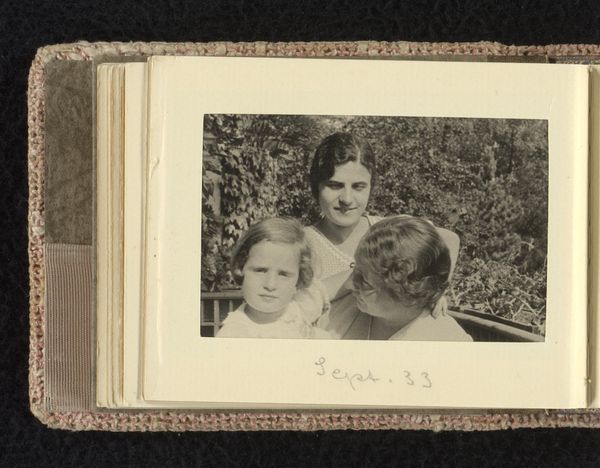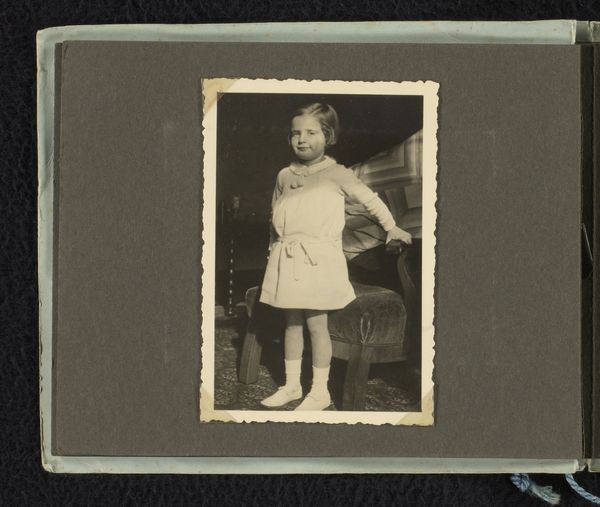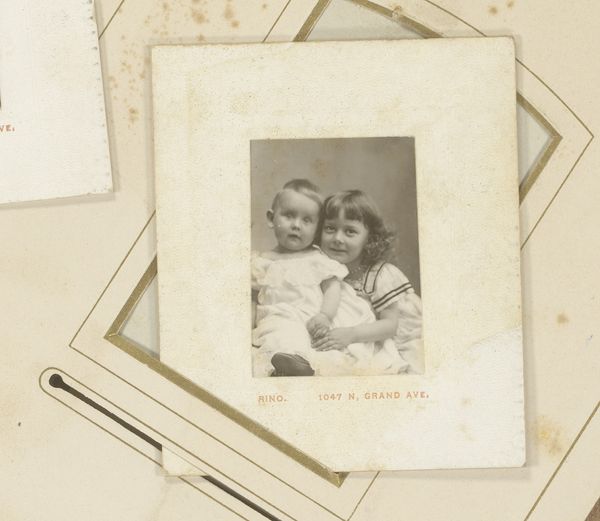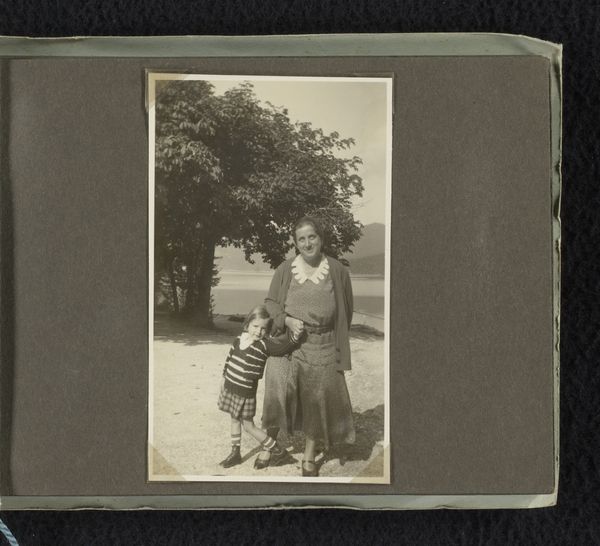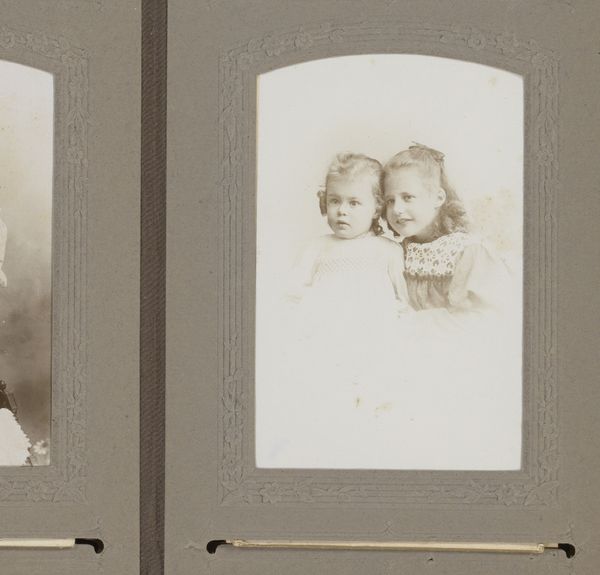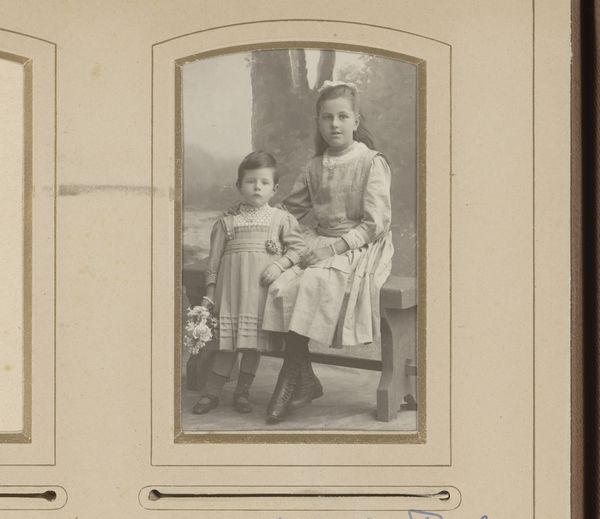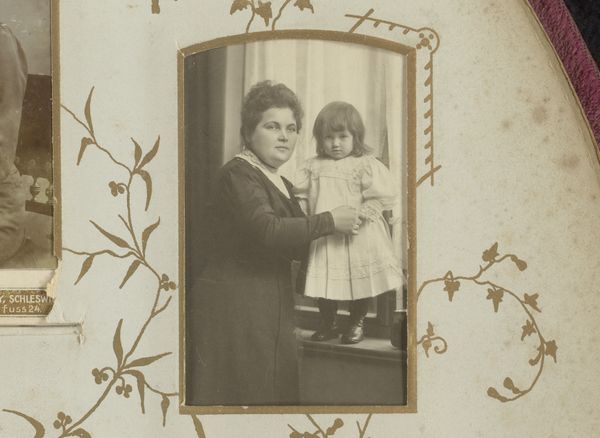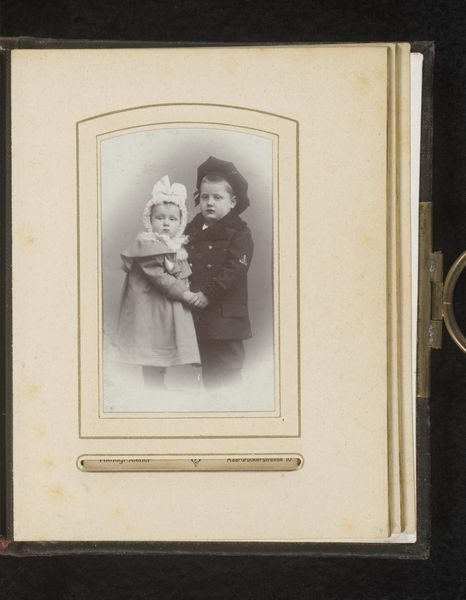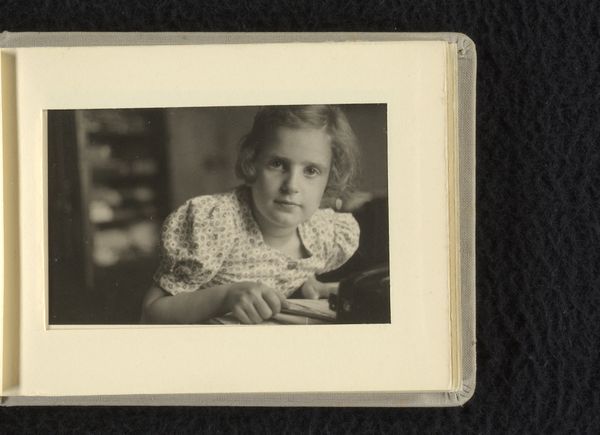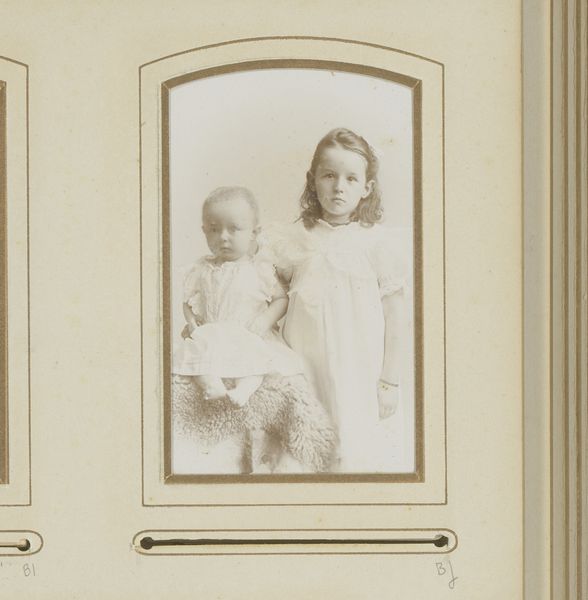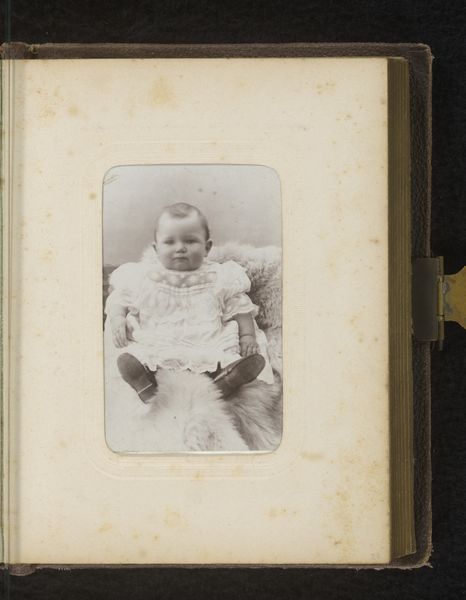
Isabel Wachenheimer met tante Trude of tante Hede, juli-augustus 1933, Hamburg Possibly 1933 - 1937
0:00
0:00
photography, gelatin-silver-print
#
portrait
#
photography
#
gelatin-silver-print
#
realism
Dimensions: height 65 mm, width 92 mm, height 80 mm, width 106 mm, length 110 , width 90
Copyright: Rijks Museum: Open Domain
Curator: This gelatin silver print titled "Isabel Wachenheimer met tante Trude of tante Hede, juli-augustus 1933, Hamburg," presents us with a portrait, potentially dating between 1933 and 1937. The photo seems to be lifted straight from a personal album of the Wachenheimer family. Editor: My first impression is one of subdued gravity. The somber faces against a background of dark foliage...there's an unsettling emotional weight, considering the era in which it was taken. The intimacy suggests a personal snapshot, but it also speaks of vulnerability. Curator: Absolutely, the social context of 1930s Hamburg cannot be ignored. Photography became an accessible medium for documenting personal histories. We're looking at an ostensibly innocent portrait, yet its survival transforms it into a stark document of family, memory, and perhaps even resistance against erasure. Editor: Indeed. The symbolism within the everyday becomes amplified. Look at the visual weight—the imposing presence of the adult figure juxtaposed with the child, perhaps representative of innocence against experience. Is there a conscious element here, maybe even some attempt to instill confidence into a fearful child in an unsafe world? Curator: The clothing too—those stark white dresses evoke purity and tradition. Though that innocence would shortly become under attack with the escalation of persecution. They’re pictured outdoors; they could have wanted the symbolism of nature – growth, resilience – imbued into the photograph. Editor: So the choice of medium also plays a role—photography offered immediacy, truth claims, while also being reproducible and easily disseminated. Does the proliferation of such personal imagery represent an attempt to reclaim personal narrative in an environment where those narratives were under assault? Curator: It makes one wonder about the hands holding the camera. Perhaps an affirmation of familial bonds, an attempt to immortalize fleeting moments before historical forces shattered their reality. Every detail carries potential symbolic meaning. Editor: It is a haunting image; it compels one to ask a barrage of complex, pertinent questions, regardless of missing clear narrative answers. Curator: This quiet image from the Wachenheimer family collection teaches us how a simple photograph, born from personal circumstance, speaks so resoundingly to wider narratives of cultural history.
Comments
No comments
Be the first to comment and join the conversation on the ultimate creative platform.
